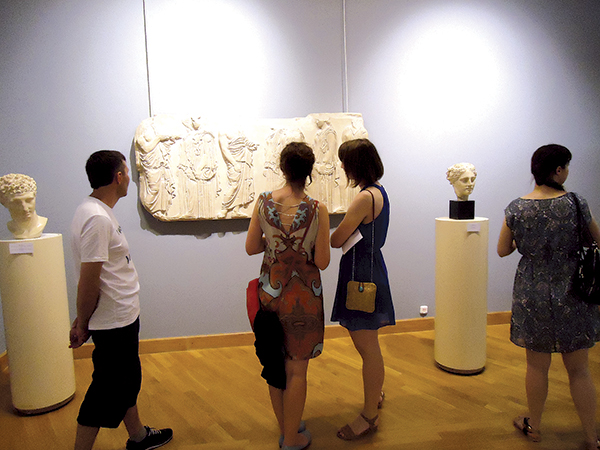 |  |
At the end of the last century, Nadia Khodasevich-Léger, wife of famous artist Fernand Léger, donated a gorgeous gift to the National Art Museum of Belarus (at that time the State Art Museum of the BSSR): more than a hundred casts of sculptures made at the workshop-studio of the Louvre.

Casts of sculptures from Louvre arouse true interest
In 1978, the casts were exhibited at the National Art Museum in Minsk, then stored away in the archives for three decades before going once more on display. The Replica of Beauty exhibition (casts of sculpture created in the Louvre workshop) embraces the idea of the museum as a temple of art. It shows our cultural and artistic achievements, striving to show us timeless fragments of Truth, which endure through the ages.
The art of ancient Egypt continues to fascinate not only archaeologists, historians, and art historians, but ordinary members of the public. Even the youngest of children recognise its mysteries. The Egyptians were inspired by concepts of eternity and human beauty: the face turned in profile, slim and elegant... Artists of ancient Sumerian kingdoms and those from Greek antiquity used a similar style.

Today’s exhibition reminds us that Greek sculpture combined authenticity, noble realism and dynamism, setting the standard for the whole world. The troublesome Middle Ages focused on religious art and heroic characterisation, while the Renaissance — the age of Michelangelo — revived principles of antiquity, including those from the Middle Ages. Art showed again people in Greek profile, while the Renaissance was characterised by compassion and truthfulness.
The Replica of Beauty exhibition aims to show us masterpieces of world importance, represented not only in books but reproduced full size, at the highest professional artistic level.
By Veniamin Mikheev











